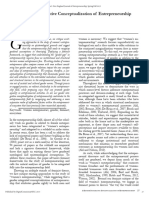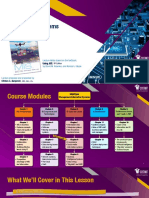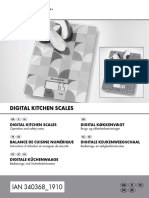0% found this document useful (0 votes)
133 views2 pagesSit 308 Human Computer Interface
This document contains a student's answers to three questions regarding human-computer interaction. It first summarizes the multi-store model of memory, which proposes that memory consists of sensory, short-term, and long-term components. It then justifies the importance of evaluation at different stages of the design process. Finally, it outlines strategies for designing systems that can accommodate both expert and novice users, such as using personas and allowing for customization of interfaces.
Uploaded by
shem nyangateCopyright
© © All Rights Reserved
We take content rights seriously. If you suspect this is your content, claim it here.
Available Formats
Download as DOCX, PDF, TXT or read online on Scribd
0% found this document useful (0 votes)
133 views2 pagesSit 308 Human Computer Interface
This document contains a student's answers to three questions regarding human-computer interaction. It first summarizes the multi-store model of memory, which proposes that memory consists of sensory, short-term, and long-term components. It then justifies the importance of evaluation at different stages of the design process. Finally, it outlines strategies for designing systems that can accommodate both expert and novice users, such as using personas and allowing for customization of interfaces.
Uploaded by
shem nyangateCopyright
© © All Rights Reserved
We take content rights seriously. If you suspect this is your content, claim it here.
Available Formats
Download as DOCX, PDF, TXT or read online on Scribd
/ 2

























































































